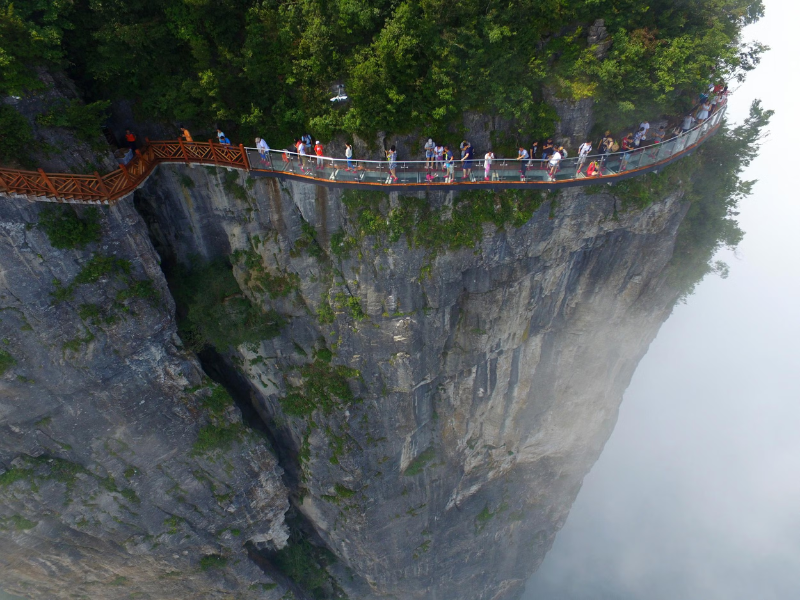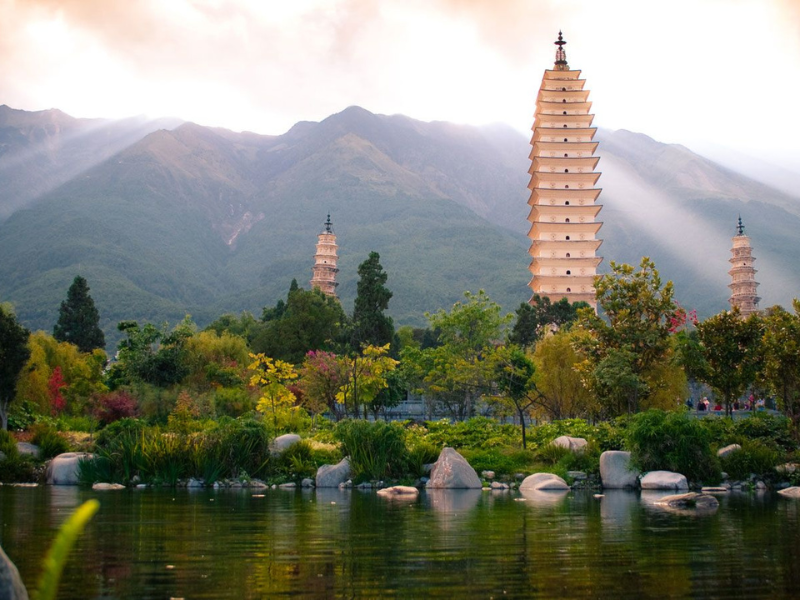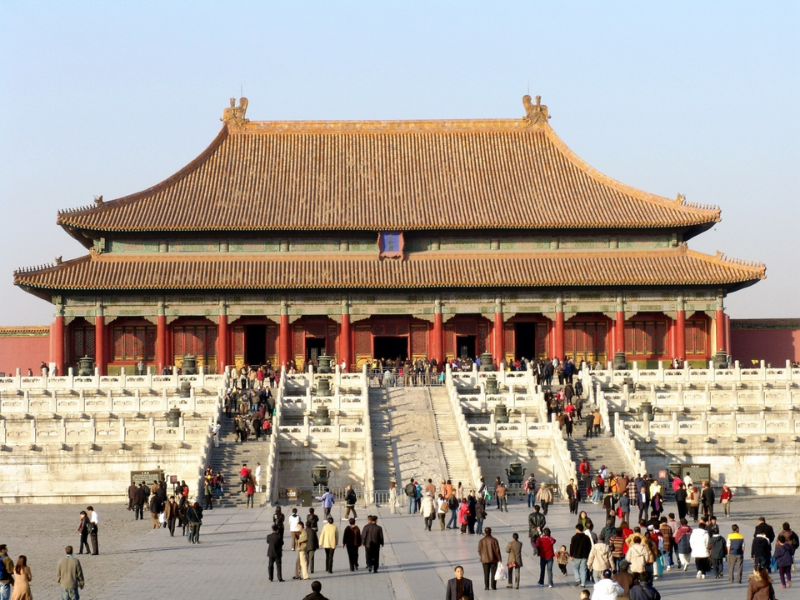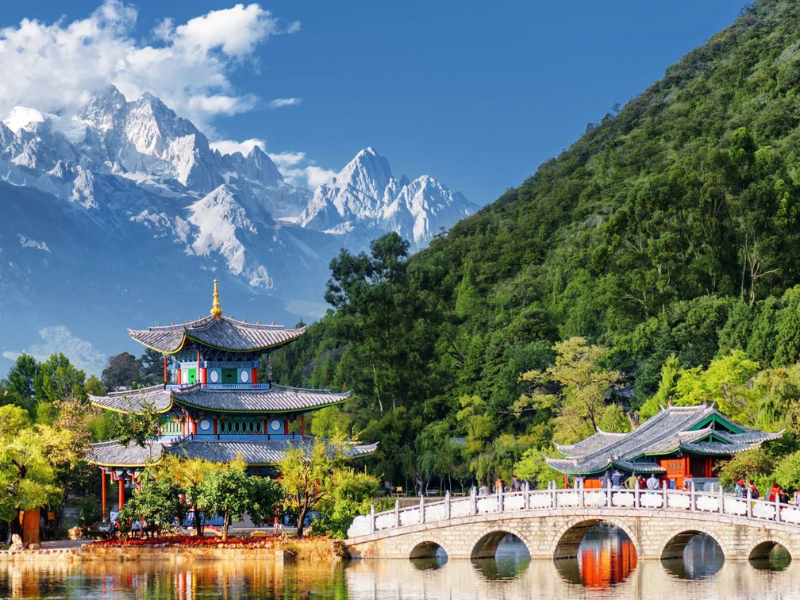
China is one of the world’s most dynamic and diverse countries, offering a unique blend of ancient history, rich culture, and modern innovations. From its iconic landmarks like the Great Wall and the Terracotta Army to the towering skyscrapers of Shanghai, China promises travelers a journey through time, nature, and bustling cityscapes. With a history spanning thousands of years, its unique combination of majestic landscapes, cultural heritage, and cutting-edge technology makes China an intriguing and unforgettable destination for travelers worldwide.
In this comprehensive guide, we explore the must-visit destinations, practical tips, and rich cultural insights that will help you get the most out of your trip to China. Whether you’re planning to visit ancient ruins, explore towering mountains, or experience one of the world’s most cosmopolitan cities, China offers something for every type of traveler.
Best Time to Visit China: Seasonal Guide for Travelers
Due to China’s vast geographical size, the climate varies greatly depending on the region. The best time to visit depends on the cities or attractions you are planning to explore. Here’s a breakdown of the weather in each season and when you should visit for different experiences:
Spring (March to May):
Spring is one of the best seasons to visit China, thanks to the mild weather and beautiful scenery. Average temperatures range from 10°C to 20°C (50°F to 68°F), making it perfect for outdoor activities like hiking, sightseeing, and exploring cities. Spring is also the season when flowers bloom across many regions, making places like Beijing, Hangzhou, and Chengdu particularly beautiful.
Spring offers a break from the extreme heat and winter cold, so if you want to visit cultural and historical sites, this is a great time. There are fewer tourists during this period compared to summer, meaning you can explore iconic attractions like the Great Wall of China and the Forbidden City in peace.

Summer (June to August):
Summer in China can be very hot, particularly in the southern regions such as Guangzhou, Hong Kong, and Shenzhen. Temperatures in these areas often rise above 30°C (86°F), and humidity levels are high. While the coastal regions may offer some relief with sea breezes, inland cities like Beijing and Xi’an can feel quite uncomfortable during peak summer.
However, summer is a great time to visit China’s northern regions, such as the Inner Mongolia Autonomous Region, where the weather is milder, and you can experience outdoor festivals. If you’re interested in taking part in summer activities like hiking or beach visits, cities like Xiamen or Qingdao are perfect. Summer is also an excellent time to witness cultural festivals such as the Dragon Boat Festival (June) and various temple fairs.
Autumn (September to November):
Autumn is considered one of the best times to visit China, with pleasant temperatures and fewer crowds. The weather is cooler but not too cold, and the autumn foliage in many areas, including the famous Yellow Mountains and Jiuzhaigou Valley, creates a spectacular display of red, orange, and gold leaves. The cities of Beijing and Xi’an are particularly charming during this time, with the crisp air and stunning landscapes making for perfect sightseeing conditions.
Autumn is also an excellent time to embark on hiking trips or outdoor adventures. For those planning to visit cultural landmarks like the Terracotta Army or the Forbidden City, the autumn months provide a comfortable and enjoyable experience.
Winter (December to February):
Winter in China can be extremely cold, especially in northern regions such as Harbin, where temperatures can plummet below freezing. However, this season offers some unique experiences for travelers. Harbin is home to one of the world’s most spectacular winter festivals, the Harbin Ice and Snow Sculpture Festival, which features massive ice sculptures illuminated at night. Visiting during winter allows you to witness a side of China that is often overlooked by tourists.
If you’re more interested in cultural experiences without the crowds, winter is a fantastic time to visit historical sites like the Forbidden City or the Summer Palace. The lack of tourists means you can enjoy the beauty and serenity of these iconic locations in peace.
Top Tourist Destinations in China
Beijing: A City of Ancient Majesty and Modern Power
As the political, cultural, and historical heart of China, Beijing is a must-visit city. It offers an exceptional mix of ancient wonders, such as the Forbidden City and the Great Wall, alongside modern structures like the Bird’s Nest Stadium and the CCTV Tower. Whether you are a history lover, an architecture enthusiast, or simply seeking to experience the local lifestyle, Beijing is the perfect destination to begin your journey through China.
The Great Wall of China:
The Great Wall of China is an absolute must-see for anyone visiting the country. Stretching over 13,000 miles and winding through mountains and deserts, the Wall is one of the most famous and enduring symbols of China’s ancient civilization. Visitors can explore several sections of the wall, including Badaling, Mutianyu, and Jinshanling. Hiking on the Great Wall offers awe-inspiring views and a chance to immerse yourself in the history and legend of this architectural marvel.

The Forbidden City:
As one of the most important historical landmarks in China, the Forbidden City is a UNESCO World Heritage site and a former palace complex that served as the residence of emperors during the Ming and Qing Dynasties. This sprawling complex features nearly 1,000 buildings, including temples, halls, and courtyards, making it one of the largest and best-preserved imperial palaces in the world. Visiting the Forbidden City provides a deep dive into China’s imperial past.
Tiananmen Square:
Tiananmen Square is one of the world’s largest public squares and serves as the political and cultural center of Beijing. It is the site of numerous historical events, including the 1989 protests. Notable attractions in the square include the Mausoleum of Mao Zedong, the Monument to the People’s Heroes, and the National Museum of China. A visit to Tiananmen Square offers travelers a chance to reflect on China’s complex political history while taking in the impressive architecture surrounding the square.
Temple of Heaven:
The Temple of Heaven is a large temple complex and park in Beijing that was once used by emperors to pray for good harvests. It is a masterpiece of traditional Chinese architecture, with its iconic round Hall of Prayer for Good Harvests standing as a symbol of heaven. The tranquil atmosphere and beautiful gardens make it a perfect place to relax and reflect after a day of sightseeing.

Xi’an: The Ancient Heart of China
Xi’an, the starting point of the ancient Silk Road, is another city rich in cultural heritage and historical significance. As the former capital of several Chinese dynasties, Xi’an is home to remarkable historical sites and ancient ruins.
The Terracotta Army:
The Terracotta Army is one of the most extraordinary archaeological discoveries in the world. In 1974, a group of farmers uncovered a vast underground army of life-sized statues designed to protect the tomb of Emperor Qin Shi Huang. Visitors can marvel at over 8,000 soldiers, each with distinct facial features and clothing, offering a glimpse into the grandeur of ancient China.
Xi’an City Wall:
The Xi’an City Wall is one of the best-preserved ancient city walls in China, dating back to the Ming Dynasty. The wall is surrounded by a moat and stands as a symbol of the city’s military strength. Visitors can walk or cycle along the wall and enjoy panoramic views of the city and its historic architecture.
Big Wild Goose Pagoda:
The Big Wild Goose Pagoda is a 1,300-year-old Buddhist structure located in the Da Ci’en Temple. It is one of Xi’an’s most iconic landmarks and offers a serene atmosphere for visitors. The pagoda is particularly famous for housing Buddhist scriptures brought back from India by the monk Xuanzang.
Muslim Quarter:
Xi’an’s Muslim Quarter is a vibrant district full of street food stalls, markets, and mosques, reflecting the city’s Islamic heritage. The area is especially famous for its food, such as lamb skewers, hand-pulled noodles, and the local specialty, roujiamo (a Chinese hamburger). Walking through the Muslim Quarter is a sensory delight, offering a blend of sights, sounds, and aromas.
Shanghai: A City of Modern Wonders and Timeless Beauty
Shanghai is a global financial hub and one of China’s most cosmopolitan cities. It is renowned for its futuristic skyline, historic buildings, and vibrant cultural scene.
The Bund:
The Bund is a historic waterfront area where colonial-era buildings line the Huangpu River. This iconic stretch offers one of the best views of Shanghai’s skyline, with modern skyscrapers like the Shanghai Tower juxtaposed with colonial-era architecture. Walking along the Bund offers a sense of the city’s transformation from a trading port to a global metropolis.
Yu Garden:
Yu Garden is a classical Chinese garden located in the Old City of Shanghai. The garden features pavilions, rockeries, koi ponds, and traditional bridges, offering a tranquil escape from the bustling city. The garden’s design is a masterpiece of Chinese landscape architecture and provides a beautiful contrast to Shanghai’s modernity.
Shanghai Tower:
The Shanghai Tower is the tallest building in China, standing at 632 meters (2,073 feet). The tower’s observation deck offers stunning panoramic views of the city. Visitors can marvel at the city’s sprawling urban landscape and get a glimpse of the future of urban development.
Nanjing Road:
Nanjing Road is Shanghai’s most famous shopping street, offering a bustling atmosphere with department stores, boutiques, restaurants, and entertainment venues. Whether you’re looking to shop for luxury items, sample local snacks, or simply enjoy the vibrant energy, Nanjing Road is the place to be.
Guilin: Natural Beauty at Its Best
Guilin, located in southern China, is known for its breathtaking karst mountains, crystal-clear rivers, and stunning landscapes. This city is a paradise for nature lovers, photographers, and anyone who appreciates natural beauty.
Li River Cruise:
One of the most famous attractions in Guilin is the Li River, known for its dramatic limestone peaks and lush greenery. A Li River cruise takes visitors through some of the most picturesque landscapes in China, offering unparalleled views of towering karst mountains and tranquil waters. The scenery is so captivating that it has been featured in countless Chinese paintings.
Reed Flute Cave:
Reed Flute Cave is a natural limestone cave located just outside Guilin. The cave features spectacular stalactites and stalagmites, and its colorful lighting creates a surreal, otherworldly atmosphere. Exploring the cave is an unforgettable experience, as it is filled with awe-inspiring formations that have been shaped over millions of years.
Elephant Trunk Hill:
Elephant Trunk Hill is a limestone mountain located on the Li River. The hill is shaped like an elephant drinking water, and the surrounding park is perfect for leisurely strolls. It is one of Guilin’s most famous landmarks and a great spot for photography.
Hong Kong: The Gateway to China
Hong Kong, a former British colony, is a vibrant, multicultural city known for its blend of Eastern and Western influences. With its stunning harbor views, bustling markets, and iconic skyscrapers, Hong Kong is a fascinating destination.
Victoria Peak:
Victoria Peak is the highest point on Hong Kong Island, offering spectacular views of the city’s skyline, harbor, and surrounding islands. Visitors can take the Peak Tram to the top and enjoy panoramic views of one of the world’s most beautiful cities.
Temple Street Night Market:
Temple Street Night Market is one of Hong Kong’s most famous street markets. The market is filled with vendors selling everything from electronics to street food, making it a great place for shopping and experiencing the city’s vibrant energy.
Hong Kong Disneyland:
Hong Kong Disneyland is a magical destination for families and Disney fans. While smaller than its counterparts in the U.S., the park is packed with exciting rides, shows, and attractions, making it a must-visit for anyone traveling with children or seeking a bit of whimsy during their trip.

Practical Travel Tips for Visiting China
- Visa Requirements: Most travelers to China will need a visa, and the process can vary depending on your nationality. It’s important to check the visa requirements well in advance of your trip.
- Currency and Payments: The official currency of China is the Renminbi (RMB), also known as the Yuan. While credit cards are widely accepted in major cities, it’s advisable to carry cash in rural areas or local markets.
- Transportation: China’s transportation system is vast and modern. High-speed trains make traveling between major cities fast and comfortable. In cities, subways and buses are efficient, though taxis are also readily available. Make sure to download transportation apps for convenience.
- Language: Mandarin is the official language of China, but in large cities like Beijing and Shanghai, English is often spoken in tourist areas. Learning a few basic phrases in Mandarin can be helpful.
Conclusion: Embrace the Wonders of China
China is a country that never fails to captivate and awe its visitors. From the ancient wonders of the Great Wall and Terracotta Army to the bustling streets of Shanghai and Hong Kong, China offers a wealth of experiences that blend history, culture, and modernity in remarkable ways. No matter your interests, China is sure to leave you with lasting memories and a desire to return.
With its diverse landscapes, rich cultural heritage, and modern marvels, China remains one of the most exciting destinations in the world. So pack your bags, and embark on a journey to explore this incredible country—there’s no place quite like it.
